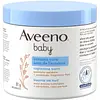What's inside
What's inside
 Key Ingredients
Key Ingredients

 Benefits
Benefits

 Concerns
Concerns

 Ingredients Side-by-side
Ingredients Side-by-side

Water
Skin ConditioningCarthamus Tinctorius Seed Oil
MaskingGlycerin
HumectantCocos Nucifera Oil
MaskingPolyglyceryl-6 Distearate
EmulsifyingButyrospermum Parkii Butter
Skin ConditioningDiheptyl Succinate
EmollientEthylhexyl Olivate
Skin ConditioningCetearyl Alcohol
EmollientPropanediol
SolventGlyceryl Stearate Citrate
EmollientJojoba Esters
EmollientPolyglyceryl-3 Beeswax
EmulsifyingCellulose
AbsorbentAloe Barbadensis Leaf Juice
Skin ConditioningSqualane
EmollientAllantoin
Skin ConditioningTocopherol
Antioxidant1,2-Hexanediol
Skin ConditioningAlpha-Glucan Oligosaccharide
CleansingCetyl Alcohol
EmollientXanthan Gum
EmulsifyingHectorite
AbsorbentCaprylhydroxamic Acid
Trisodium Ethylenediamine Disuccinate
Capryloyl Glycerin/Sebacic Acid Copolymer
Skin ConditioningCitric Acid
BufferingSodium Benzoate
MaskingSodium Citrate
BufferingWater, Carthamus Tinctorius Seed Oil, Glycerin, Cocos Nucifera Oil, Polyglyceryl-6 Distearate, Butyrospermum Parkii Butter, Diheptyl Succinate, Ethylhexyl Olivate, Cetearyl Alcohol, Propanediol, Glyceryl Stearate Citrate, Jojoba Esters, Polyglyceryl-3 Beeswax, Cellulose, Aloe Barbadensis Leaf Juice, Squalane, Allantoin, Tocopherol, 1,2-Hexanediol, Alpha-Glucan Oligosaccharide, Cetyl Alcohol, Xanthan Gum, Hectorite, Caprylhydroxamic Acid, Trisodium Ethylenediamine Disuccinate, Capryloyl Glycerin/Sebacic Acid Copolymer, Citric Acid, Sodium Benzoate, Sodium Citrate
Colloidal Oatmeal 1%
AbsorbentAvena Sativa Kernel Extract
AbrasiveAvena Sativa Kernel Oil
Skin ConditioningBenzoic Acid
MaskingBenzyl Alcohol
PerfumingCaprylic/Capric Triglyceride
MaskingCeramide NP
Skin ConditioningCetearyl Alcohol
EmollientCetyl Alcohol
EmollientCitric Acid
BufferingDimethicone
EmollientDipotassium Phosphate
BufferingEthylhexylglycerin
Skin ConditioningGlycerin
HumectantIsocetyl Alcohol
EmollientP-Anisic Acid
MaskingPotassium Phosphate
BufferingSodium Cetearyl Sulfate
CleansingSodium Hydroxide
BufferingStearic Acid
CleansingWater
Skin ConditioningColloidal Oatmeal 1%, Avena Sativa Kernel Extract, Avena Sativa Kernel Oil, Benzoic Acid, Benzyl Alcohol, Caprylic/Capric Triglyceride, Ceramide NP, Cetearyl Alcohol, Cetyl Alcohol, Citric Acid, Dimethicone, Dipotassium Phosphate, Ethylhexylglycerin, Glycerin, Isocetyl Alcohol, P-Anisic Acid, Potassium Phosphate, Sodium Cetearyl Sulfate, Sodium Hydroxide, Stearic Acid, Water
 Reviews
Reviews

Ingredients Explained
These ingredients are found in both products.
Ingredients higher up in an ingredient list are typically present in a larger amount.
Cetearyl alcohol is a mixture of two fatty alcohols: cetyl alcohol and stearyl alcohol. It is mainly used as an emulsifier. Emulsifiers help prevent the separation of oils and products. Due to its composition, it can also be used to thicken a product or help create foam.
Cetearyl alcohol is an emollient. Emollients help soothe and hydrate the skin by trapping moisture.
Studies show Cetearyl alcohol is non-toxic and non-irritating. The FDA allows products labeled "alcohol-free" to have fatty alcohols.
This ingredient is usually derived from plant oils such as palm, vegetable, or coconut oils. There is debate on whether this ingredient will cause acne.
Due to the fatty acid base, this ingredient may not be Malassezia folliculitis safe.
Learn more about Cetearyl AlcoholCetyl Alcohol is a fatty alcohol. Fatty Alcohols are most often used as an emollient or to thicken a product.
Its main roles are:
Though it has "alcohol" in the name, it is not related to denatured alcohol or ethyl alcohol.
The FDA allows products labeled "alcohol-free" to have fatty alcohols.
Learn more about Cetyl AlcoholCitric Acid is an alpha hydroxy acid (AHA) naturally found in citrus fruits like oranges, lemons, and limes.
Like other AHAs, citric acid can exfoliate skin by breaking down the bonds that hold dead skin cells together. This helps reveal smoother and brighter skin underneath.
However, this exfoliating effect only happens at high concentrations (20%) which can be hard to find in cosmetic products.
Due to this, citric acid is usually included in small amounts as a pH adjuster. This helps keep products slightly more acidic and compatible with skin's natural pH.
In skincare formulas, citric acid can:
While it can provide some skin benefits, research shows lactic acid and glycolic acid are generally more effective and less irritating exfoliants.
Most citric acid used in skincare today is made by fermenting sugars (usually from molasses). This synthetic version is identical to the natural citrus form but easier to stabilize and use in formulations.
Read more about some other popular AHA's here:
Learn more about Citric AcidGlycerin is already naturally found in your skin. It helps moisturize and protect your skin.
A study from 2016 found glycerin to be more effective as a humectant than AHAs and hyaluronic acid.
As a humectant, it helps the skin stay hydrated by pulling moisture to your skin. The low molecular weight of glycerin allows it to pull moisture into the deeper layers of your skin.
Hydrated skin improves your skin barrier; Your skin barrier helps protect against irritants and bacteria.
Glycerin has also been found to have antimicrobial and antiviral properties. Due to these properties, glycerin is often used in wound and burn treatments.
In cosmetics, glycerin is usually derived from plants such as soybean or palm. However, it can also be sourced from animals, such as tallow or animal fat.
This ingredient is organic, colorless, odorless, and non-toxic.
Glycerin is the name for this ingredient in American English. British English uses Glycerol/Glycerine.
Learn more about GlycerinWater. It's the most common cosmetic ingredient of all. You'll usually see it at the top of ingredient lists, meaning that it makes up the largest part of the product.
So why is it so popular? Water most often acts as a solvent - this means that it helps dissolve other ingredients into the formulation.
You'll also recognize water as that liquid we all need to stay alive. If you see this, drink a glass of water. Stay hydrated!
Learn more about Water